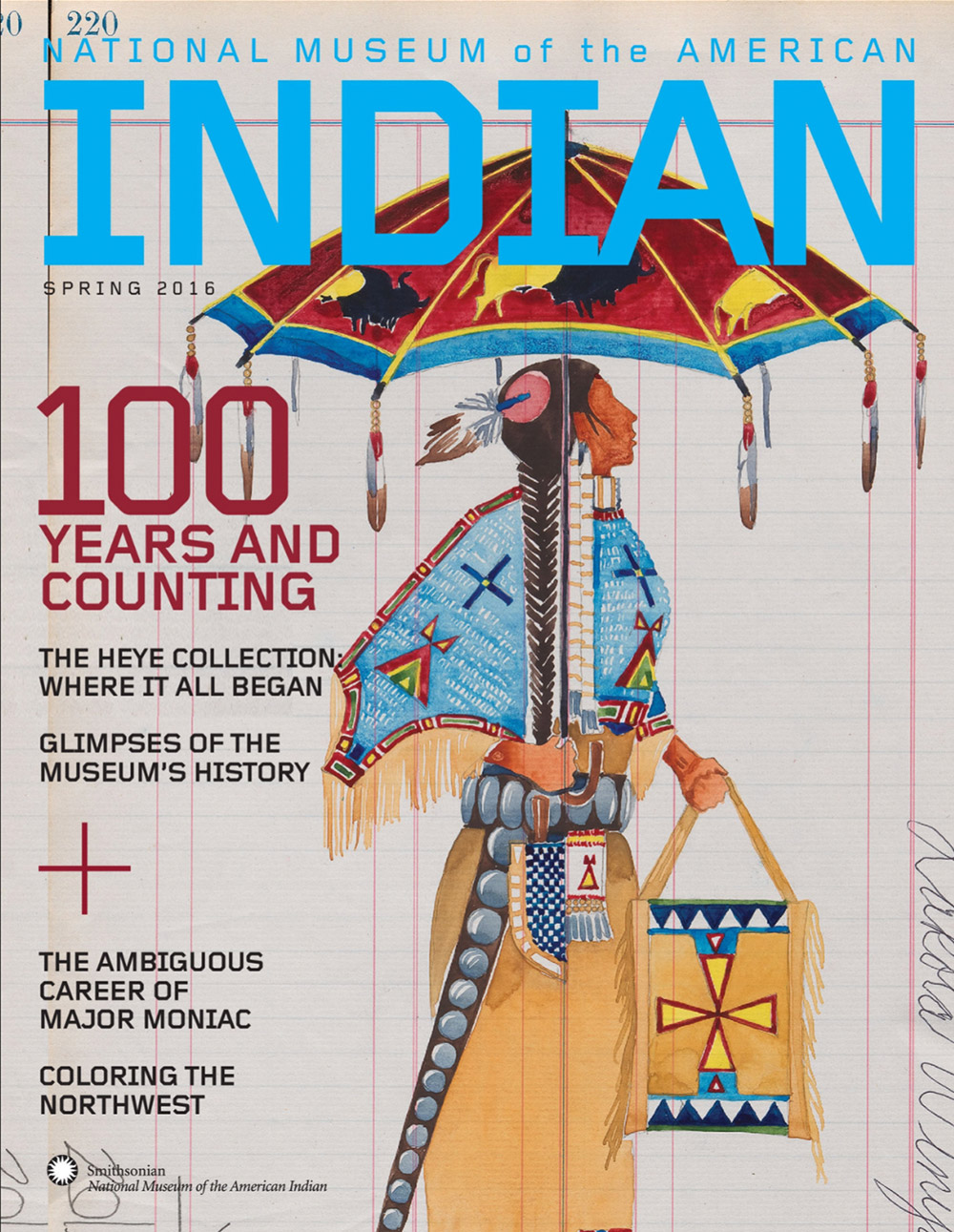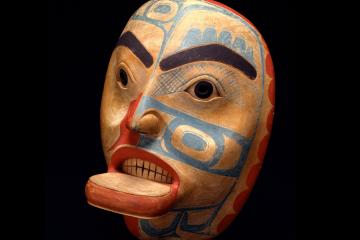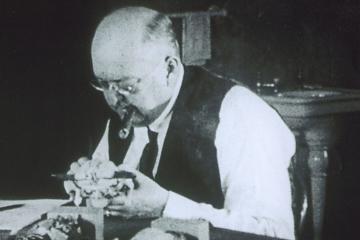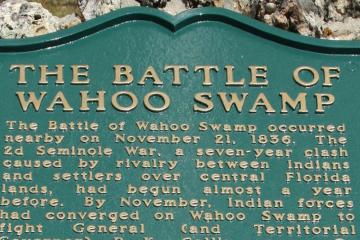
On the Cover
The modern revival of ledger art forms a link between the historic drawings of 19th-century warriors, in U.s. captivity or otherwise, who recorded events of their lives in used account books, and present-day Native artists recapturing the beauty and simplicity of their ancestor's work. The Museum holds notable examples of these past and present art-works, some specially commissioned for the collection, and will feature them in the exhibition Unbound: Narrative Art of the Plains, on view at New York’s George Gustav Heye Center from March 12 through December 4.
Lakota Winyan, 2012. Joel Pulliam (Oglala Lakota, b. 1968). Antique ledger paper, watercolor, graphite, ink. 26/8956 The finery on this woman indicates her prominence. In the 1800s parasols were a desired item acquired through trade. Native people often adapted them, adding their own designs as seen in this painting.



